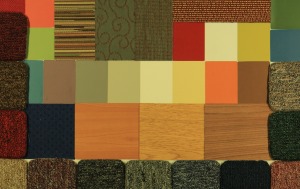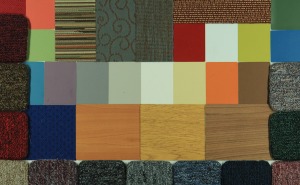A few weeks ago I gave a three-hour seminar on lighting museums and galleries to the graduate students in an art curating program at a university here in New York. Condensing everything I’d like to say into less than three hours was tough. The two big questions were what to include and what to leave out. I started with a quick overview of how to think about light and lighting before moving on to basic vocabulary and some common lighting techniques. Then, since LEDs are clearly the future, even when lighting art, I moved on to an overview of both color temperature and color rendering. I talked about reference materials such as the IES Lighting Handbook, intensity and brightness ratios, and other considerations before we moved into their gallery space to use their track light system for some demonstrations.
After the whole affair a faculty member, who sat in on most of the seminar, said he had hoped I would have spent much more time talking about how to use track lights and less time on unimportant issues like design, color temperature, and color rendering (!). I was respectful, but stunned. Focusing track lights is so complex that it requires extensive demonstrations? Understanding that with LEDs the color qualities of the light vary widely, and can only be properly selected when they are understood is unimportant information? Uhh…NO. Or, as my 20 month old niece says, “no no no no.”
Yes, five or ten years ago the default light source in museums was an incandescent or halogen lamp. The color temperature difference was minor and the color rendering of both was excellent. That’s not true today. Look at the cut sheet for any museum grade track light and you’ll see that you have a choice of several color temperatures and CRI values. If ANYONE needs to understand the qualities of light that must be selected when using LED fixtures, if anyone needs to understand the affect that color temperature and CRI have on how colors are perceived, it’s certainly people involved in displaying and lighting art. To me, that means the curators of exhibits and the lighting designers they hire.
As I’ve discussed earlier, changing the color temperature of the light changes the color appearance of objects, as shown below.


The phenomenon of color consistency means that the shift in color appearance isn’t as great as one might expect or as these photos suggest, but the shifts are real. If you’ve ever bought a black garment only to discover later that it was actually dark blue you’ve experienced this shift. A similar thing happens when we compare a high CRI light source and a low CRI light source. If your work involves color perception this is basic and critical information.
Curators can be forgiven for not knowing much about this, but if they know nothing how can they collaborate with their lighting designer to show the art as they intend? Administrators and curators of museums and galleries – educate yourselves, then hire a lighting designer!
